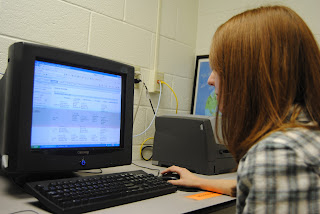As a female college student, I am constantly hearing about weight-loss regimens and carb-free diets— frankly, I’m sick of it. I watch some women count their calories on sheets of notebook paper and cry when they eat a piece of chocolate. This strife to become fit is no longer a healthy objective. Women my age are obsessed with being thin.
Obsessions are easy to fall into, I won’t argue with that. I have been trying to shed a few pounds myself, and I guess I, too, have become consumed with my body image.
My friend and I recently started using the website Myfitnesspal.com to track our weight-loss progress. She was motivated by the website. I, however, quickly found this website to be more discouraging than helpful. I was addicted to eating less and working out more to the point where I aimed to have negative numbers in my calorie counter each day. I have also seen many people become more critical of other’s bodies and habits as they become more successful with their own goals.
The obsession is destructive, and it’s bringing out the worst in us. But it’s not hard to see why. Weight is thrown at women in everything from shampoo commercials to movies and television shows.
In October 2010, Maura Kelly wrote an editorial for Marie Claire urging her disgust for the new TV series “Mike and Molly.” The show tells the story of a couple that meets in an Overeaters Anonymous group. Kelly claimed that she would be “grossed out if [she] had to watch two characters with rolls and rolls of fat kissing each other.” She took her displeasure for the television series one step further by saying, “I find it aesthetically displeasing to watch a very, very fat person simply walk across a room.” Kelly didn’t stop there. She compared her distaste for overweight people as a feeling similar to seeing “a very drunk person [stumble] across a bar or a heroin addict slumping in a chair.” It seems that Kelly took a stab at everyone with any kind of problem. After receiving countless angry replies to her editorial, Kelly later apologized to readers who may have been offended—revealing her own struggle with anorexia. And that’s not a surprise—those who struggle with their own appearance tend to poke at belly rolls the most.
Kelly attempted to offer some advice for overweight people, as if losing weight is as simple as tying your shoes. She urges people to read labels and consume less processed foods and high fructose corn syrup. But I wonder if Kelly has seen the cost of fresh fruit lately--$4 for a 12 oz. container of fresh blueberries, 62 cents per pound of fresh bananas. A gallon of milk is now over $3, but soda seems to always be on sale.
Gas prices and taxes are increasing all over the nation. According to a MarketWatch report released on April 16, the price of a gallon gas has gone up 75 cents nationwide so far in 2011, and gas has risen 20 cents per gallon in just the last two weeks. Low income and middle class families are struggling to keep food on their tables. MarketWatch also reported that hourly wages have dropped .6 percent since March. Food costs are rising across the table, .8 percent in the last month. While people should be eating fresh produce and meats, processed foods remain the cheapest.
I’m not saying that individuals don’t have control over what they do to their bodies; rather I’m saying that outward situations and cultural influences have contributed to America’s obesity epidemic.
Just driving around Williamsburg, Ky., I can see several fast-food advertisements for super-sized meals and more “manly” hamburgers at discount prices. America is devoted to dominance and convenience. We care more about the shelf life of a product than the life-span of a person. While there has been some movement toward a healthier America, there is still more working against our health than working in favor of it.
On the other extreme, there are people, especially young women, who are striving to look like the airbrushed celebrities on the covers of fashion magazines. I’m not saying that people shouldn’t watch their weight, exercise, consume healthy foods, and take care of their bodies, but body image shouldn’t be the sole focus. I’m also not condoning obesity, but people should think about an overweight person’s obstacles before they start poking their knives into another’s stomach.










